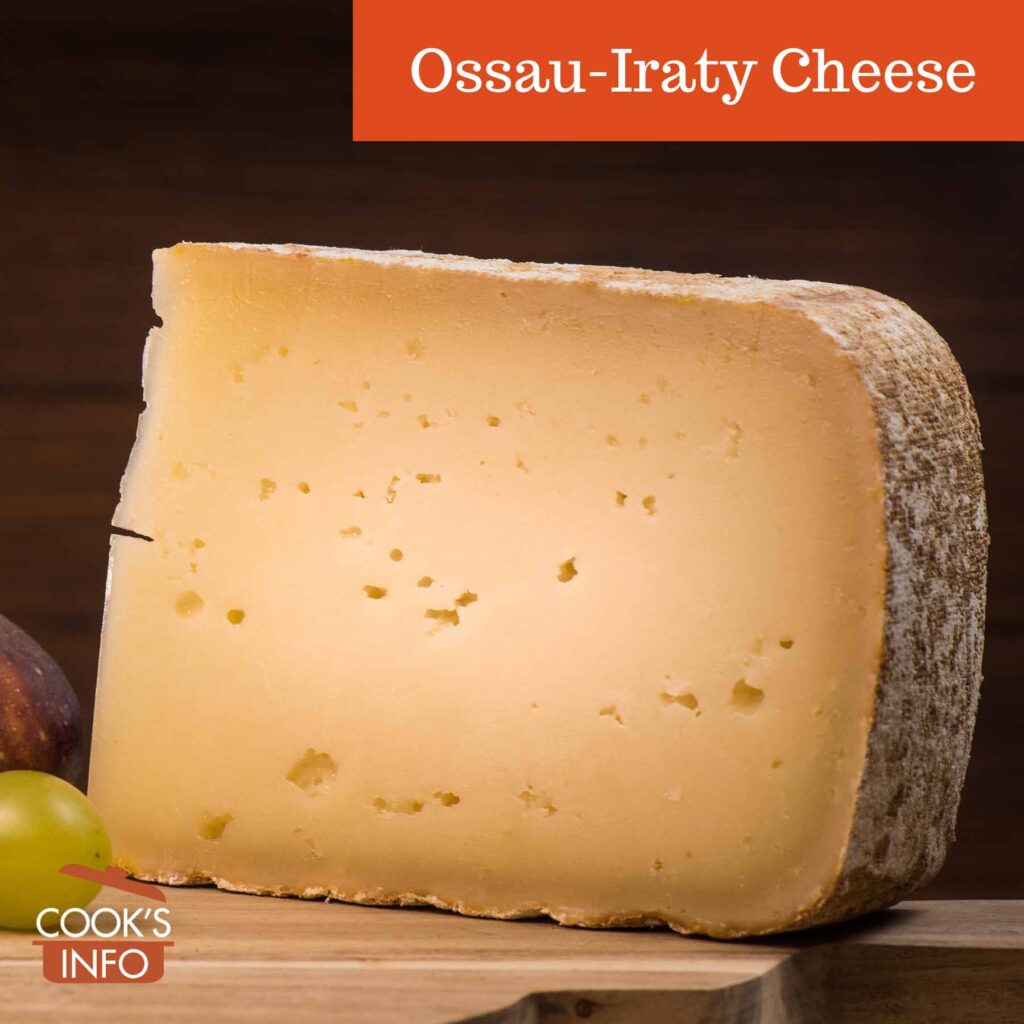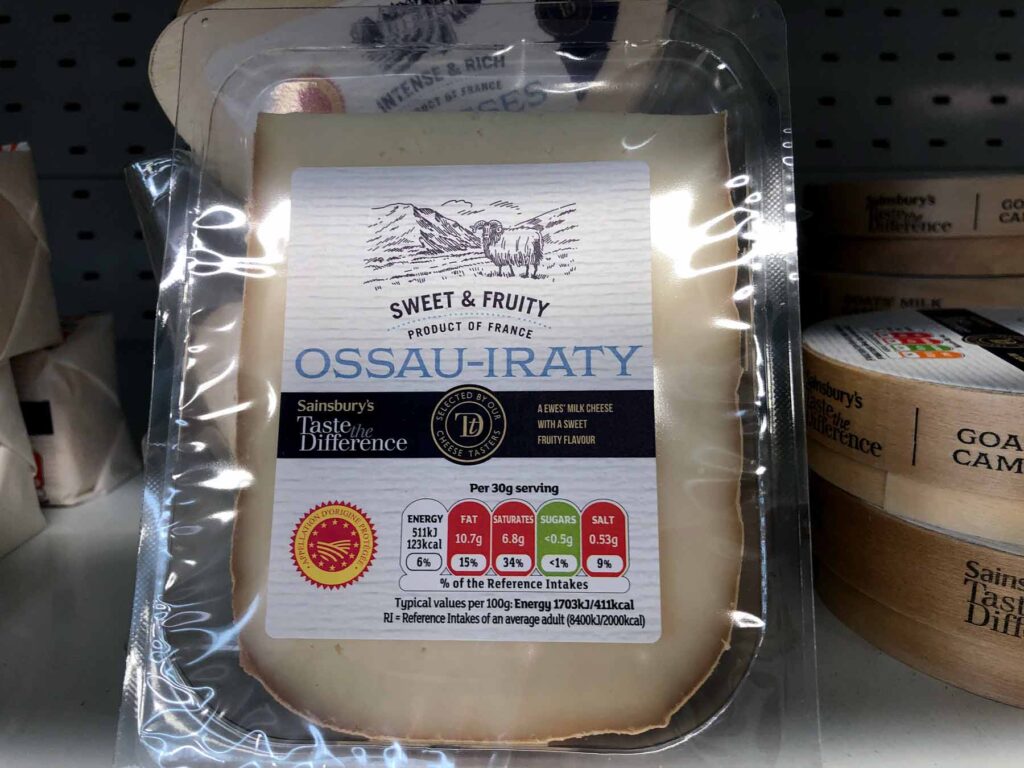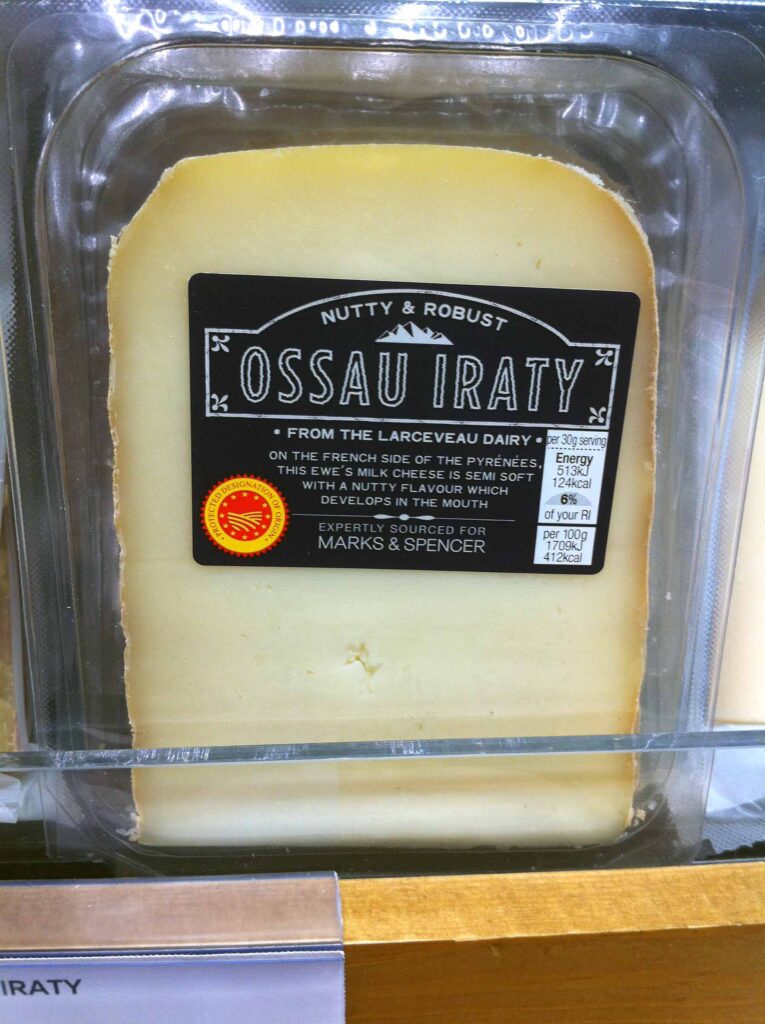Ossau-Iraty cheeses are a type of cheese that, like Parmesan or Roquefort, are a defined cheese, but made by different producers following the same standards though slight variations in technique arise.
The cheeses develop orangey-brown or orangey-yellow rinds as they age, and are off-white inside.
The inside may look slightly oily when young, and consequently have an almost buttery texture. When older and dried, the cheese can be grated.
Ossau-Iraty cheeses are often served with cherry preserves as a dessert.
Well-known brands include Hamel (aged over a year) and Istara (aged three months.)
How Ossau-Iraty cheeses are made.
The cheeses are made from raw milk from sheep. The breeds of sheep used for the milk are Basco-Béarnaise and/or Manech. The milk is drawn on from over 2000 sources.
The milk is heated to 30 C (86 F ) and calves’ rennet is added to curdle it. The curd is cut, and then the temperature is raised to between 36 and 44 C (97 and 111 F.) The curd is then put into moulds, pressed, then salted with coarse salt or brine.
The cheeses are made in 3 sizes:
- small (aka petit);
- medium (aka non-fermier, meaning non-farmers);
- large (aka fermier, meaning farmers).
The medium and large cylinders will be 25 to 30 cm (10 to 12 inches) by 10 to 15 cm (4 to 6 inches) in size, and produce cheeses weighing 2 to 3 kg (4 ½ to 6 ½ pounds) or 4 to 7 kg (9 to 15 ½ pounds.)
The cheeses are aged 3 to 12 months. For the first 3 weeks, the cheeses are turned every day. Cheese made in small sizes might only be aged 60 days. As they age, get sharper and saltier.
The cheeses are made June through September inclusive.
There are both factories and small-scale farmers producing these cheeses. The ones made by farmers may have a grassier, spicier taste than those made by factories. Less than 10% of the total volume, though, is actually made by farmers.
Nutrition
Ossau-Iraty cheeses have a minimum 50% butterfat.
History Notes
Ossau-Iraty cheeses received their French Appellation d’Origine Contrôlée in 1980.
Language Notes
The name Ossau-Iraty for the cheeses was coined only in 1980. Ossau is a valley in Béarn; Iraty is a forest of beech trees.
It is pronounced “oss o ear aty.”




